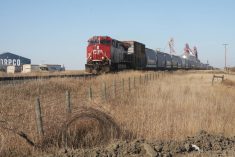NEWS reports and images of the devastation caused by hurricane Katrina when it hit the southern U.S. states on Aug. 29 are shocking.
Despite our own experience of stormy weather and high winds in the prairie region of Canada, few of us can imagine what winds of more than 250 kilometres per hour might feel like. Add to that drenching rains and rushing waters causing widespread flooding.
This deepens the meaning of the expression “force of nature.”
But while the incredible winds that this hurricane packed were a phenomenon of nature, what happened in the path of the wind was not.
Read Also

Agriculture needs to prepare for government spending cuts
As government makes necessary cuts to spending, what can be reduced or restructured in the budgets for agriculture?
The extreme force with which the hurricane slammed into the gulf coast region, as well as much of the consequent damage, were the result of human activity. The terrible suffering and loss of life in the region is almost entirely a function of neglect and disorganization.
The Mississippi River has been altered radically during more than a century of human redesign.
To prevent its annual flooding, the U.S. Army Corps of Engineers has built levees (embankments) along the river. This development controls the river, making it possible to expand farms and industries along its banks.
Those floods, however, served a complex function for the entire Mississippi Delta. By dumping huge amounts of sediment and fresh water across the Delta, they rebuilt the wetlands and replenished what tides and storms wore away.
The resulting delta wetlands and marshes formed a vast, hardy, resilient buffer that could absorb sea surges and interrupt high winds. The annual flooding also cast silt into the Gulf of Mexico to a string of barrier islands that served to cut down surges and waves.
Many of these natural protections have been erased, eroded or critically undermined by the engineered flood control system. Starving the wetlands and islands has left the coastal area exposed and vulnerable.
Further, a policy of deregulation has allowed developers to drain the wetlands even more rapidly for commercial uses. So, when Katrina blew in, there was little to slow her down.
The storm hit especially hard in New Orleans. This port city, built at the mouth of the Mississippi, relies on a massive series of levees to protect it from flooding. But this elaborate feat of engineering is costly to maintain and upgrade.
Because the Bush administration has had other priorities, it cut the allocation for the Army Corps hurricane and flood protection program by 44 percent last year. This reduction meant that plans to fortify levees and upgrade pumping had to be shelved. These were all human decisions.
The ecological impact of this hurricane is incalculable. The human toll is tragic beyond description – untold numbers of people left to die hideous deaths. Have justice and mercy been undermined and destroyed along with the wetlands?
Can “developed” world citizens and their governments learn to respect and work with nature, rather than exploiting and polluting it?
What will it take to restore social, political and ecological balance?
















